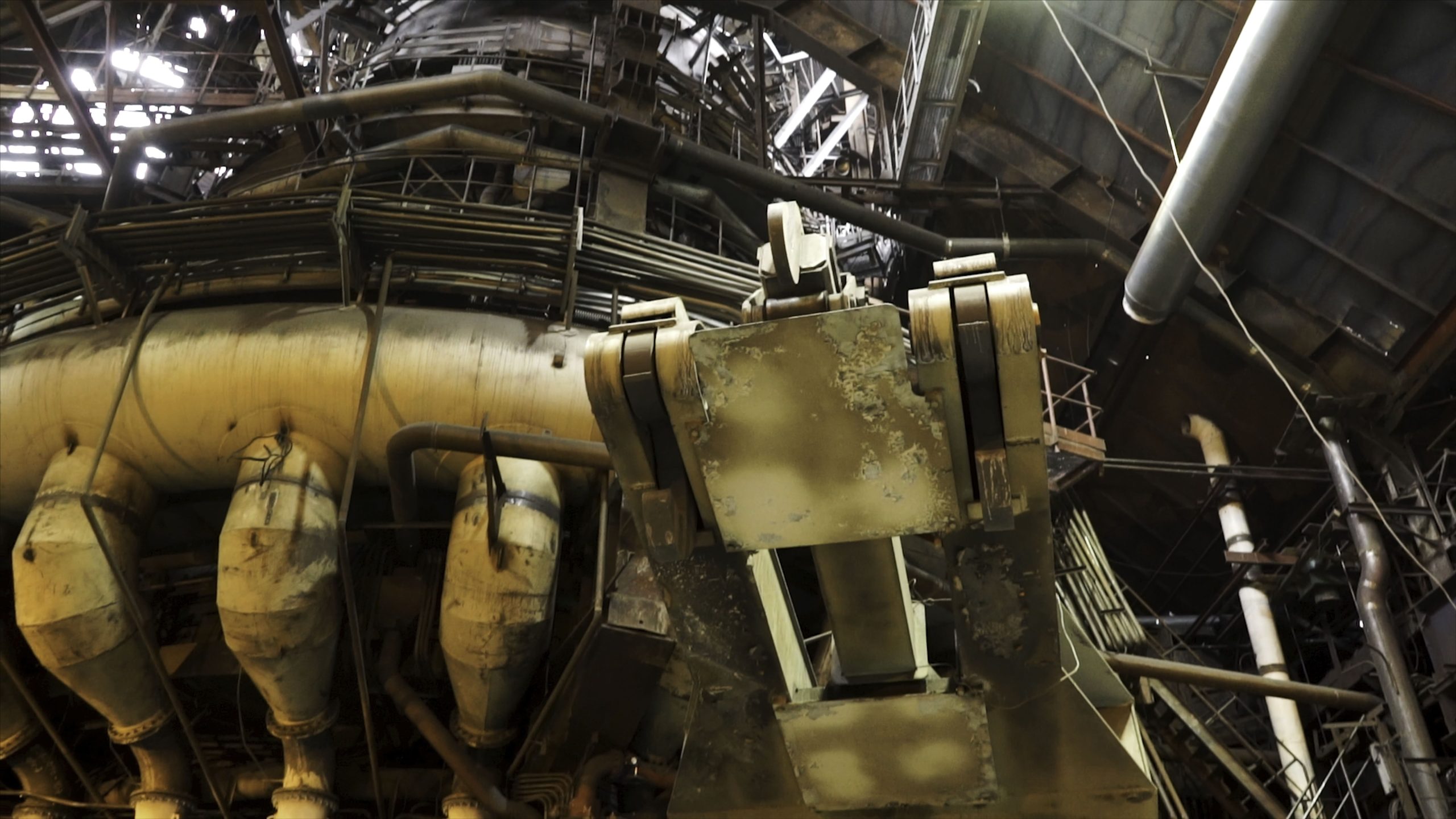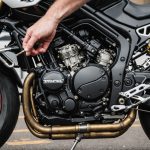Optimizing the air-fuel ratio significantly impacts your Kawasaki Vulcan 900 Custom's engine performance. Achieving the perfect balance boosts efficiency, enhances acceleration, and reduces emissions. Understanding this delicate relationship empowers riders to unlock their motorcycle’s full potential. Whether you're seeking to improve fuel economy or maximize power, mastering this aspect of your engine's operation is essential for an exhilarating riding experience. Learn how simple adjustments can lead to powerful results and elevate your ride to new heights.
Understanding the Air-Fuel Ratio
The air-fuel ratio is a critical aspect of internal combustion engines, influencing the engine performance and the combustion process. It refers to the proportion of air to fuel in the engine's combustion chamber. Maintaining the correct air-fuel ratio ensures efficient fuel burning, which is essential for optimal engine performance.
Also to read : Ultimate Guide to Diagnosing and Repairing the EFI System on Your Triumph Bonneville Bobber
An improper air-fuel ratio can lead to poor engine efficiency, increased emissions, and even engine damage. A rich mixture (too much fuel) can cause incomplete combustion, resulting in higher emissions and lower fuel economy. Conversely, a lean mixture (too much air) can lead to overheating and engine knocking.
For the Kawasaki Vulcan 900 Custom, the optimal air-fuel ratio is crucial for balancing performance and emissions. This motorcycle typically requires a ratio close to 14.7:1, which is considered the stoichiometric ratio. At this ratio, the engine achieves maximum efficiency and minimal emissions, as the fuel is entirely combusted with the available oxygen. Adjusting the air-fuel ratio can improve specific performance aspects, but it should be done carefully to avoid adverse effects.
Also read : Step-by-Step Guide to Replacing the Air Temperature Sensor on Your Triumph Street Triple
Tools Needed for Adjusting Air-Fuel Ratio
When it comes to motorcycle maintenance, particularly for the Kawasaki Vulcan 900 Custom, having the right tuning tools is essential. These tools not only facilitate precise adjustments but also ensure safety and efficiency during the process.
Essential Tuning Tools
- Wideband O2 Sensor: This tool is crucial for measuring the air-fuel ratio accurately. It provides real-time feedback, allowing for precise tuning.
- Fuel Management System: Devices like Power Commander or similar are tailored for the Vulcan 900 Custom, enabling fine-tuning of fuel delivery.
- Vacuum Gauge: Used to balance the throttle bodies, ensuring smooth engine operation.
Safety Equipment and Precautions
- Safety Goggles: Protects eyes from potential fuel splashes or debris.
- Gloves: Essential for handling tools and components, offering protection against burns and cuts.
- Ensure the motorcycle is on a stable surface and cooled down before starting any adjustments.
Using the right tools and taking necessary precautions not only enhances performance but also extends the life of your motorcycle. Always refer to the Vulcan 900 Custom's manual for specific recommendations and guidelines.
Step-by-Step Guide to Adjusting the Air-Fuel Ratio
Before diving into the tuning process for the Kawasaki Vulcan 900 Custom, it's essential to conduct an initial assessment. Begin by ensuring the motorcycle is on a stable surface and has cooled down. This preparation step is crucial for both safety and accuracy during the adjustment steps.
Initial Assessment and Preparation
- Inspect the Engine: Check for any visible issues such as leaks or worn-out components that could affect the tuning process.
- Gather Tools: Ensure all necessary tools, including the wideband O2 sensor and fuel management system, are ready and functioning.
Detailed Adjustment Steps
- Connect the O2 Sensor: Attach the wideband O2 sensor to the exhaust to monitor the air-fuel ratio in real-time.
- Access Fuel Management System: Use the fuel management system to adjust the fuel delivery, aiming for the optimal ratio of 14.7:1.
- Fine-tuning: Make small adjustments and test the engine performance after each change.
Common Mistakes to Avoid
- Over-adjusting: Making large changes can lead to engine inefficiencies.
- Ignoring Baseline Data: Always start with the manufacturer's baseline settings to avoid drastic errors.
By following these steps, you can achieve effective engine optimization, enhancing performance and longevity.
Testing Engine Performance Post-Adjustment
After adjusting the air-fuel ratio on your Kawasaki Vulcan 900 Custom, it's crucial to evaluate the engine efficiency and overall performance. Performance testing ensures that the modifications have achieved the desired outcomes without compromising the engine's integrity.
Methods for Performance Testing
One effective method is dyno testing. A dynamometer provides precise metrics on horsepower, torque, and engine response. This tool simulates real-world conditions, offering a comprehensive picture of the motorcycle's performance post-adjustment.
Using a Dynamometer
- Set-Up: Secure the motorcycle on the dynamometer, ensuring all safety protocols are followed.
- Conduct Tests: Run the engine through various RPM ranges to gather data on performance metrics.
- Analyse Results: Pay attention to changes in horsepower and torque to assess improvements.
Interpreting Test Results
After conducting dyno testing, it's essential to interpret the results accurately. Look for any discrepancies in engine response or efficiency. If needed, make further adjustments to the fuel management system to fine-tune the air-fuel ratio. This iterative process helps in achieving optimal engine performance, ensuring the motorcycle runs smoothly and efficiently.
Common Issues and Troubleshooting
In the realm of motorcycle performance, particularly with the Kawasaki Vulcan 900 Custom, identifying and addressing engine issues is crucial. A frequent symptom of an improper air-fuel ratio includes engine misfires or rough idling. These can indicate a rich mixture causing incomplete combustion or a lean mixture leading to overheating.
Troubleshooting Tips
- Check Air Filters: A clogged air filter can restrict airflow, affecting the air-fuel mix. Regularly inspect and clean or replace as needed.
- Inspect Spark Plugs: Fouled plugs can result from a rich mixture. Examine for carbon deposits and replace if necessary.
- Monitor Fuel Injectors: Ensure injectors are clean and functioning correctly to maintain proper fuel delivery.
When to Seek Professional Help
While some issues can be resolved with basic troubleshooting, complex problems might require professional intervention. If persistent engine knocking or significant power loss occurs, it is advisable to consult a mechanic. They can perform detailed diagnostics and adjustments to restore optimal performance to the Vulcan 900 Custom.
Enhancing Fuel Efficiency through Air-Fuel Ratio
Optimising the air-fuel ratio is pivotal for improving fuel efficiency in motorcycles like the Kawasaki Vulcan 900 Custom. By ensuring the engine burns fuel more effectively, riders can experience significant cost savings over time. Adjusting the air-fuel ratio to the optimal level allows the engine to use fuel more efficiently, reducing unnecessary consumption and extending the distance travelled per litre of fuel.
Long-Term Benefits of Better Fuel Management
Improved fuel efficiency not only translates to immediate cost savings but also contributes to the longevity of the engine. A well-maintained air-fuel ratio reduces wear and tear, minimising the risk of engine damage and the need for expensive repairs. Over time, this results in lower maintenance costs and an extended lifespan for the motorcycle.
Eco-Friendly Riding Practices
Adopting eco-friendly practices, such as regularly adjusting the air-fuel ratio, supports sustainable riding. By ensuring complete combustion, emissions are reduced, making the motorcycle more environmentally friendly. Riders can take pride in their reduced carbon footprint, knowing they are contributing positively to the environment while enjoying their ride.
Emissions Control and Environmental Impact
Understanding the relationship between the air-fuel ratio and emissions control is crucial for any motorcycle enthusiast, especially those riding the Kawasaki Vulcan 900 Custom. A well-balanced air-fuel ratio ensures complete combustion, which is vital for reducing harmful emissions. By achieving the optimal ratio, riders can significantly minimise their environmental footprint.
Importance of Compliance with Environmental Regulations
Adhering to environmental regulations is not just a legal obligation but also a responsibility towards the planet. Regulations often dictate specific emission limits, and maintaining the correct air-fuel ratio helps in meeting these standards. Compliance ensures that the Vulcan 900 Custom operates within permissible emission levels, promoting cleaner air.
Strategies for Minimising Emissions
To effectively control emissions, several strategies can be employed:
- Regular Tuning: Consistently adjusting the air-fuel ratio ensures efficient combustion.
- Use of Quality Fuels: High-quality fuels burn more cleanly, reducing pollutants.
- Routine Maintenance: Keeping the engine and its components in top condition prevents excess emissions.
By focusing on these strategies, riders can enjoy their motorcycles while contributing to a healthier environment.
Visual Aids and Resources for Tuning
When tuning the Kawasaki Vulcan 900 Custom, having access to visual aids can significantly enhance understanding and accuracy. Diagrams and charts provide a clear visual reference, simplifying complex concepts related to the air-fuel ratio adjustments. These aids often highlight key components and illustrate the tuning process step-by-step, making them invaluable for both novices and experienced mechanics.
Instructional Videos and Guides
Instructional videos are another excellent resource, offering a dynamic and engaging way to learn. These videos demonstrate the tuning process in real-time, allowing viewers to visualise each step and understand the nuances involved. They often include expert tips and common pitfalls to avoid, enhancing the learning experience.
Additional Reading Materials
For those who prefer a more traditional approach, numerous guides and articles are available online. These resources delve deeper into the science behind tuning, providing comprehensive explanations and troubleshooting advice. By combining these visual and textual resources, enthusiasts can gain a well-rounded understanding of the tuning process, ensuring their Vulcan 900 Custom performs at its best.
Expert Insights and Advanced Techniques
In the realm of motorcycle performance, expert insights are invaluable for those seeking to push the limits of their Kawasaki Vulcan 900 Custom. Tuning experts emphasise the importance of a meticulous approach to advanced tuning. These experts recommend starting with a thorough understanding of the motorcycle's baseline performance metrics, which sets the foundation for any modifications.
Advanced Tuning Techniques
For experienced tuners, advanced techniques involve precise adjustments to the fuel mapping and ignition timing. Utilising a fuel management system allows for customisation of the air-fuel ratio, enhancing both power and efficiency. Experts also suggest exploring aftermarket components like performance air filters and exhaust systems to further optimise engine output.
Future Trends in Motorcycle Tuning
Looking ahead, the future of motorcycle tuning is set to be shaped by technological advancements. Smart tuning systems that utilise AI for real-time adjustments are on the horizon, promising even greater precision and adaptability. As technology evolves, staying informed and adapting to these trends will be crucial for maintaining cutting-edge performance.
Conclusion: The Benefits of Mastering Air-Fuel Ratio
Understanding and mastering the air-fuel ratio is paramount for any motorcycle enthusiast dedicated to performance enhancement. Proper motorcycle tuning not only optimises engine efficiency but also significantly boosts rider satisfaction. By achieving the ideal air-fuel mix, riders experience smoother rides, enhanced power delivery, and improved fuel economy.
The impact of precise tuning extends beyond numbers and metrics. It transforms the overall riding experience, making each journey more enjoyable and fulfilling. Riders who invest time in learning about air-fuel ratio adjustments often find themselves more connected to their motorcycles, appreciating the nuances of their machine's performance.
Engaging with the motorcycle community can be highly beneficial in this journey. Sharing experiences and insights with fellow enthusiasts can provide valuable perspectives and tips. Community forums and local clubs offer a wealth of knowledge, helping riders refine their tuning skills and achieve even greater satisfaction. Embrace this opportunity to learn from others and contribute your own experiences to the collective wisdom of the motorcycle community.











